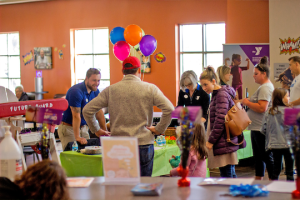We, as a nation, are stunned that nine people—African Americans—were murdered in Emanuel AME Church in Charleston, South Carolina. They had welcomed their killer into their sanctuary for bible study.
The sight of the perpetrator, white Dylann Storm Roof, donning a bullet proof vest as he was guided carefully into a police vehicle was also startling. Startling because I don’t recall ever seeing any person of color being so protected in police custody. In fact, the public is beginning to realize that African Americans face endemic structural/institutional brutality. Consider the video taken recently of an African American teenage girl in a bathing suit being pushed to the ground and threatened by a police officer. Others of color fare worse.
Sharon Morgan and Thomas DeWolf note the ProPublica research regarding the fatal police shootings where young black males are 21 times more likely to be killed than their white counterparts (Yes! Magazine, Summer, 2015).
There have been immense changes throughout the history of the United States. We have evolved from a nation that upheld slavery through Jim Crow Laws to the Civil Rights Movement to electing an African American president. Nevertheless, as President Obama himself states, “We are not cured of racism.”
My experience as a family therapist has taught me that even when a system changes for the better, there is also within the system a pull to change back. Change, after all, even when it is for the good, can be perceived as loss—the loss of an old order (or disorder, to be more accurate). And so there is fear—fear about what will happen when old, rigid behaviors and structures disappear. So goes the old proverb: The unfamiliar angel is less acceptable than the familiar devil. Individuals dig in their heels, families resist change, and so do communities and countries.
Dylann Roof may have been a lone gunman who massacred nine, by all accounts, very kind and gentle people; but his actions are the tip of the iceberg of a culture of domination and violence that supports racism along with many other prejudices (sexism, intolerance of other religions, to name a few). Some white supremacists arise from that part of the system that pushes for change back to inequality and the destructive power of violence. The rest of us buy into change back when we, like many families I have witnessed, respond with denial of the systemic problems in our midst.
The tension between change and change back is palpable; but so is the hope that, as Martin Luther King said, “The arc of the moral universe is long but it bends towards justice.” The choice is ours to join in that forward movement. The hope is that we have or that we will.
For more see Yes! Magazine, Summer, 2015, “His Ancestors Were Slave Traders and Hers Were Slaves. What They Learned About Healing from a Roadtrip,” by Sharon Leslie Morgan and Thomas Norman DeWolf, and other articles there.
* Kayta Curzie Gajdos holds a doctorate in counseling psychology and is in private practice in Chadds Ford, Pennsylvania. She welcomes comments at MindMatters@DrGajdos.com or 610-388-2888. Past columns are posted to www.drgajdos.com.
About Kayta Gajdos
Dr. Kathleen Curzie Gajdos ("Kayta") is a licensed psychologist (Pennsylvania and Delaware) who has worked with individuals, couples, and families with a spectrum of problems. She has experience and training in the fields of alcohol and drug addictions, hypnosis, family therapy, Jungian theory, Gestalt therapy, EMDR, and bereavement. Dr. Gajdos developed a private practice in the Pittsburgh area, and was affiliated with the Family Therapy Institute of Western Psychiatric Institute and Clinic, having written numerous articles for the Family Therapy Newsletter there. She has published in the American Psychological Association Bulletin, the Family Psychologist, and in the Swedenborgian publications, Chrysalis and The Messenger. Dr. Gajdos has taught at the college level, most recently for West Chester University and Wilmington College, and has served as field faculty for Vermont College of Norwich University the Union Institute's Center for Distance Learning, Cincinnati, Ohio. She has also served as consulting psychologist to the Irene Stacy Community MH/MR Center in Western Pennsylvania where she supervised psychologists in training. Currently active in disaster relief, Dr. Gajdos serves with the American Red Cross and participated in Hurricane Katrina relief efforts as a member of teams from the Department of Health and Human Services' Substance Abuse and Mental Health Services Administration.Now living in Chadds Ford, in the Brandywine Valley of eastern Pennsylvania, Dr. Gajdos combines her private practice working with individuals, couples and families, with leading workshops on such topics as grief and healing, the impact of multigenerational grief and trauma shame, the shadow and self, Women Who Run with the Wolves, motherless daughters, and mediation and relaxation. Each year at Temenos Retreat Center in West Chester, PA she leads a griefs of birthing ritual for those who have suffered losses of procreation (abortions, miscarriages, infertility, etc.); she also holds yearly A Day of Re-Collection at Temenos.Dr. Gajdos holds Master's degrees in both philosophy and clinical psychology and received her Ph.D. in counseling at the University of Pittsburgh. Among her professional affiliations, she includes having been a founding member and board member of the C.G. Jung Educational Center of Pittsburgh, as well as being listed in Who's Who of American Women. Currently, she is a member of the American Psychological Association, The Pennsylvania Psychological Association, the Delaware Psychological Association, the American Family Therapy Academy, The Association for Death Education and Counseling, and the Delaware County Mental Health and Mental Retardation Board. Woven into her professional career are Dr. Gajdos' pursuits of dancing, singing, and writing poetry.
- Web |
- More Posts(250)


 (3 votes, average: 3.67 out of 5)
(3 votes, average: 3.67 out of 5)
Comments